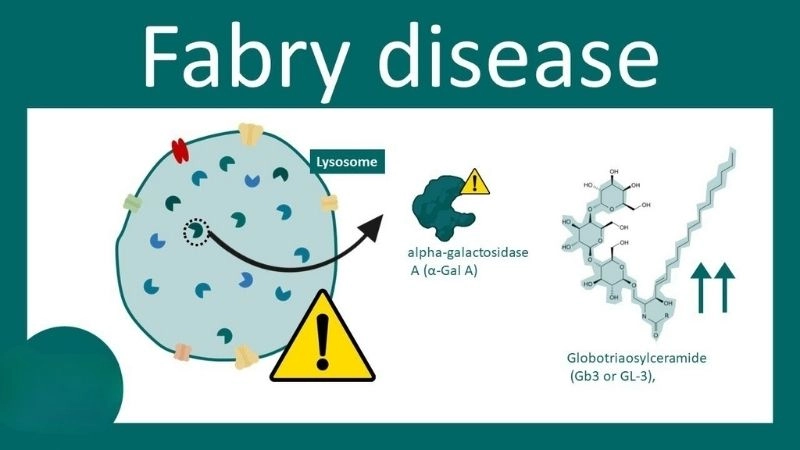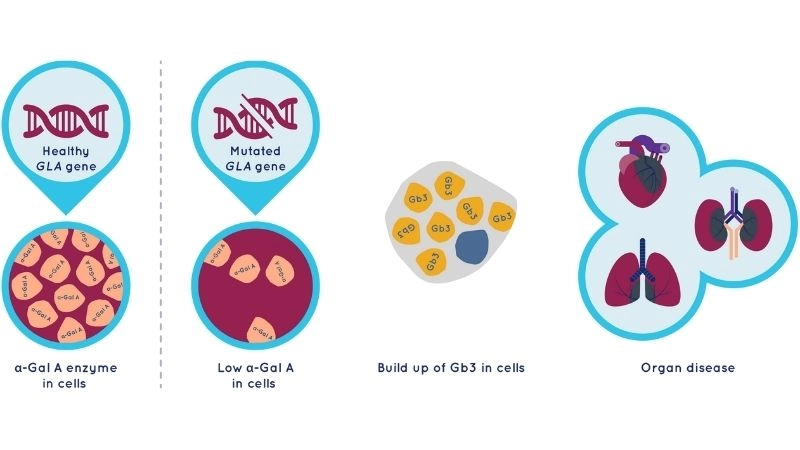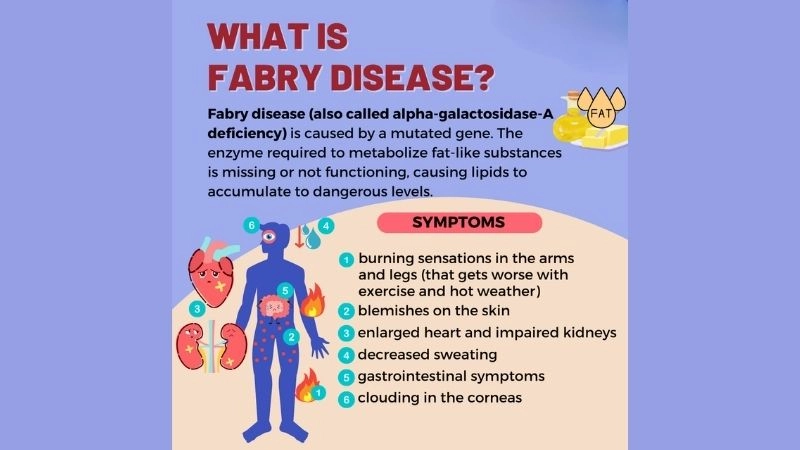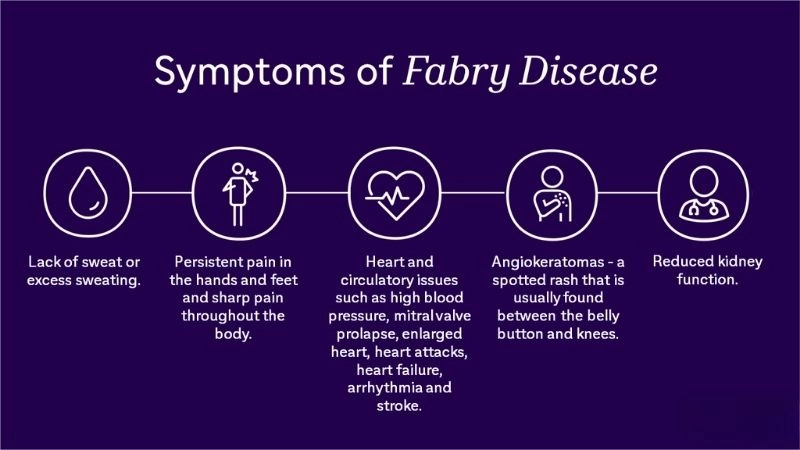Fabry disease is a rare inherited disorder affecting multiple organs through enzyme deficiency. Discover its symptoms, causes, and treatment breakthroughs.
What are the main causes of Fabry Disease?
- Fabry Disease is caused by mutations in the GLA gene, leading to deficient alpha-galactosidase A enzyme activity in the body.
- The disease is inherited in an X-linked manner, meaning males are typically more severely affected than females.
- Accumulation of globotriaosylceramide (GL-3) in tissues due to enzyme deficiency results in organ damage over time.

Fabry disease symptoms early recognition
>>> Understand more about: Turner syndrome (associated heart defects) latest research
Key symptoms of Fabry Disease to watch for
- Pain in hands and feet, known as acroparesthesia, is an early and common symptom affecting many patients.
- Skin lesions called angiokeratomas, often appearing as small dark red or purple spots, are typical indicators of the disease.
- Kidney dysfunction, heart abnormalities, and stroke can occur in later stages due to progressive organ involvement.
How can you prevent Fabry Disease effectively?
- Genetic counseling before conception can help families understand risks and make informed health decisions.
- Regular monitoring and early diagnosis allow for enzyme replacement therapy to slow disease progression.
- Maintaining a healthy lifestyle, including diet and cardiovascular care, supports overall organ health and reduces complications.

Fabry disease treatment options explained
>>> Understand more about: Understanding symptoms and causes of Noonan Syndrome
Images visual examples of Fabry Disease
Images of Fabry Disease often include visible angiokeratomas on the skin, nerve pain locations in hands and feet, and organ imaging showing kidney or heart involvement.







>>> Understand more about: Holt-Oram syndrome symptoms early detection and risks
Fabry disease requires early diagnosis and proper treatment to reduce risks. Advances in medicine bring new hope for patients facing this rare disorder.




